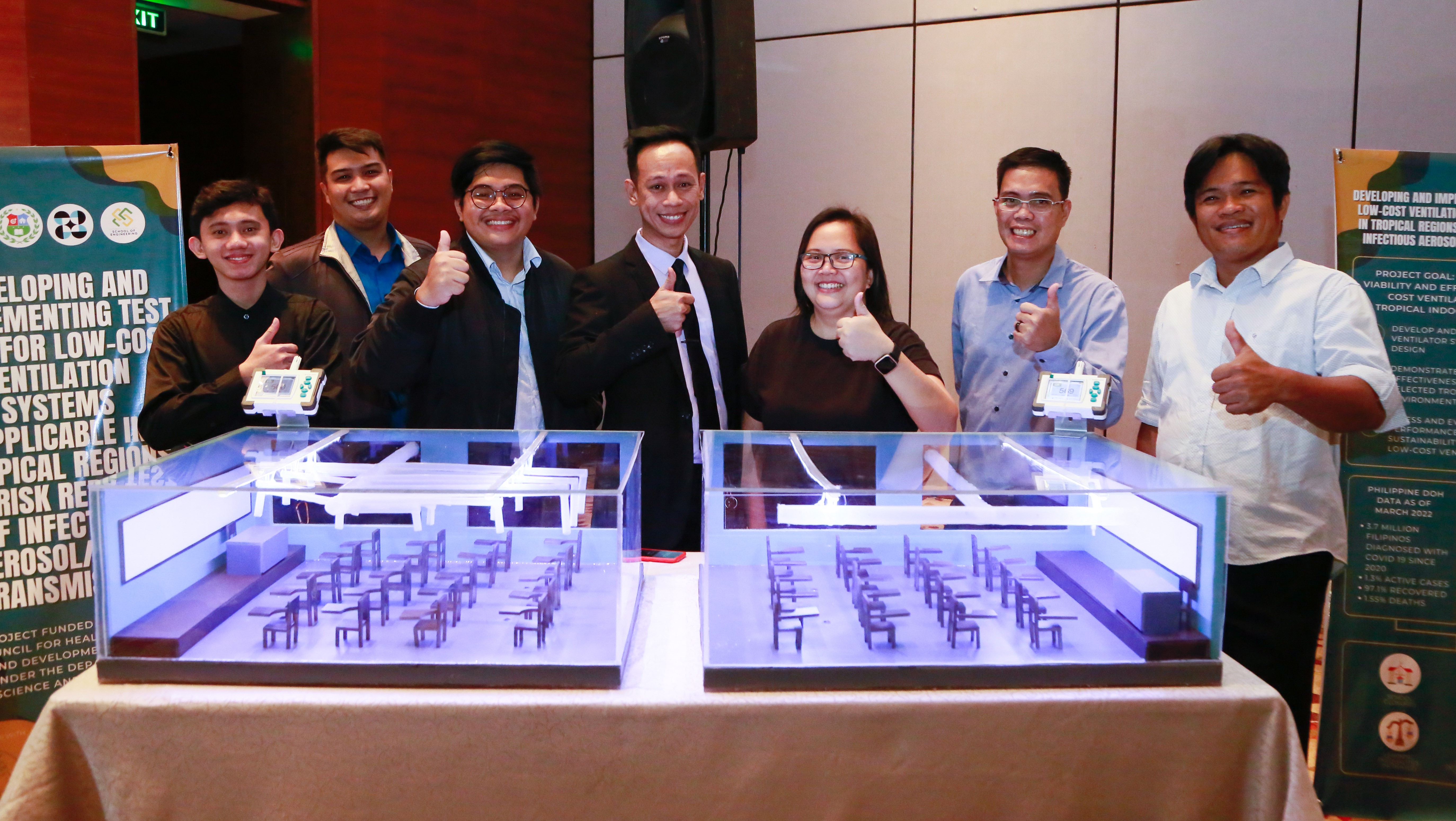NEWS AND UPDATES
HeaRT Report: Low-Cost Ventilation System to decrease risk of COVID-19 airborne transmission

The Department of Science and Technology – Philippine Council for Health Research and Development (DOST-PCHRD) in collaboration with the University of San Carlos (USC), DOST Region 7, and the Max Planck Institute for Chemistry (MPIC) in Germany, presented the Health Research and Technology (HeaRT) Report for the Low-Cost Ventilation System on 29 July 2022 at the Radisson Blu Hotel, Cebu City.
Developed by Dr. Frank Helleis of the MPIC, the ventilation system is used in more than 600 schools in Germany to decrease the risk of COVID-19 airborne transmission. Following Dr. Helleis’ design, the USC aims to develop a local version of the system, demonstrate its effectiveness within a tropical indoor setting, assess its performance, and evaluate the sustainability of its implementation in the Philippines.
Initial results of the project showed that carbon dioxide (CO2) emissions go directly to the ventilation system, which decreases the risk of spreading the virus indoors. The current prototype utilizes readily-available materials such as PET sheets, cable ties, duct tape, and glue to enable easy deployment. Approximately, one unit of the prototype ventilation system is projected to cost Php 5,000, of which the cost is expected to significantly go down after negotiation with suppliers and manufacturing partners.
With the installation of the local prototype in multiple classrooms in Cebu last May, the project team is now gearing to further test the effectivity of the ventilation system prototypes with real students during face to face classes, and assess whether the use of the ventilation system will cause any degree of discomfort among its users. Following the American Society of Heating, Refrigerating and Air-Conditioning Engineers (ASHRAE) Standard 55-2020, the team will consider the following parameters: air temperature, mean radiant temperature, air speed/velocity, relative humidity, clothing insulation, and metabolic rate.
“Aside from being low-cost, the ventilation system is also designed for easy installation which will help us enable massive deployment in the future,” DOST-PCHRD Executive Director Dr. Jaime C. Montoya explained. “Ultimately, this will help us transition to the new normal and will be beneficial for indoor environments, such as classrooms, business offices, public transport vehicles, and small manufacturing facilities, among others.”
DOST Secretary Renato J. Solidum Jr. highlighted how the project is an example of how the DOST leverages partnerships as a key strategy in carrying out S&T initiatives. “The implementation of the ventilation system here in the Philippines was made possible through the support of several institutions,” he said. “Eventually, we also hope that we can share the success of this project among our network within the ASEAN region,” he added.
A replay of the HeaRT Report for the Low-Cost Ventilation System may be accessed here.
—
The HeaRT Report was recently launched by the DOST-PCHRD to showcase the results of its supported Health Research and Technology projects.




